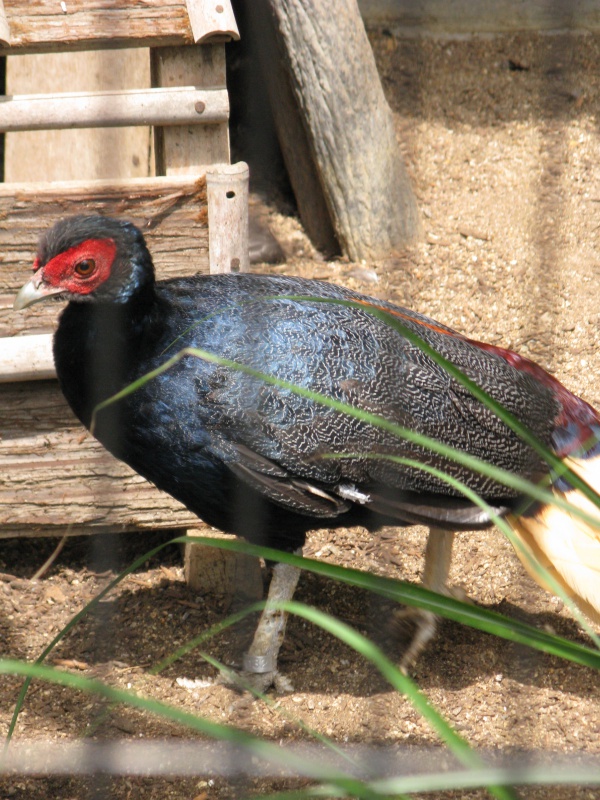Facts About Crestless fireback
The crestless fireback is an intriguing bird belonging to the Phasianidae family, native to the forests of Brunei, Indonesia, Malaysia, and Singapore. These birds predominantly inhabit subtropical or tropical moist lowland forests. Unfortunately, due to significant habitat destruction, the crestless fireback is classified as "vulnerable" on the International Union for Conservation of Nature's (IUCN) list.
Male crestless firebacks measure approximately 38 cm in length, with females being slightly smaller. These birds are visually striking, characterized by bare red facial skin, greenish or black bills, and bluish-grey legs. Males display purplish-black plumage adorned with white vermiculations (a fine, wavy pattern), coupled with a vibrant chestnut rump and cinnamon-colored tail feathers. Females, conversely, are mostly black with a glossy blue or green sheen. Juveniles resemble females but feature feathers with pale edges. Notably, young males begin developing chestnut rumps early in life.
There are two subspecies of the crestless fireback: one inhabiting mainland Malaysia and Sumatra, and the other residing in Borneo. These birds favor lowland rainforests and secondary growth forests, typically up to 300 meters above sea level. Rather reclusive, they are generally observed in pairs or small groups, foraging on the ground for small animals, plants, and fallen fruit.
The breeding season for the crestless fireback extends from April to June. They construct their nests among the large roots of trees, laying pink or pale buff-colored eggs. Regrettably, their population continues to dwindle due to habitat loss. Nevertheless, some individuals persist in protected forest areas and partially logged secondary forests.
The IUCN estimates that only about 10,000 to 20,000 mature crestless firebacks remain. With their population on a downward trajectory and their habitats continuously threatened, they have been classified as "vulnerable."

 Singapore
Singapore